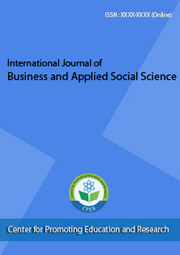Journal Menu
current
VOLUME; 5, ISSUE; 2, FEBRUARY 2019
Table of Contents
Articles
Author(s): Anthony Paul Andrews, Ph. D., Koonce, Danoel
Full Text
1112 1005
1112 1005
Abstract:
The university is considered one of the engines of growth in a local economy or its market area, since its direct contributions consist of 1) employment of faculty and staff, 2) services to students, and supply chain links vendors, all of which define the University’s Market area. Indirect contributions consist of those agents associated with the university in terms of community and civic events. Each of these activities represent economic benefits to their host communities and can be classified as the economic impact a university has on its local economy and whose spatial market area includes each of the above agents. In addition are the critical links to the University, which can be considered part of its Demand and Supply chain.This paper contributes to the field of Public/Private Impact Analysis, which is used to substantiate the social and economic benefits of cooperating for economic resources. We use Census data on Output of Goods and Services, Labor Income on Salaries, Wages and Benefits, Indirect State and Local Taxes, Property Tax Revenue, Population, and Inter-Industry to measure economic impact (Implan, 2016).






